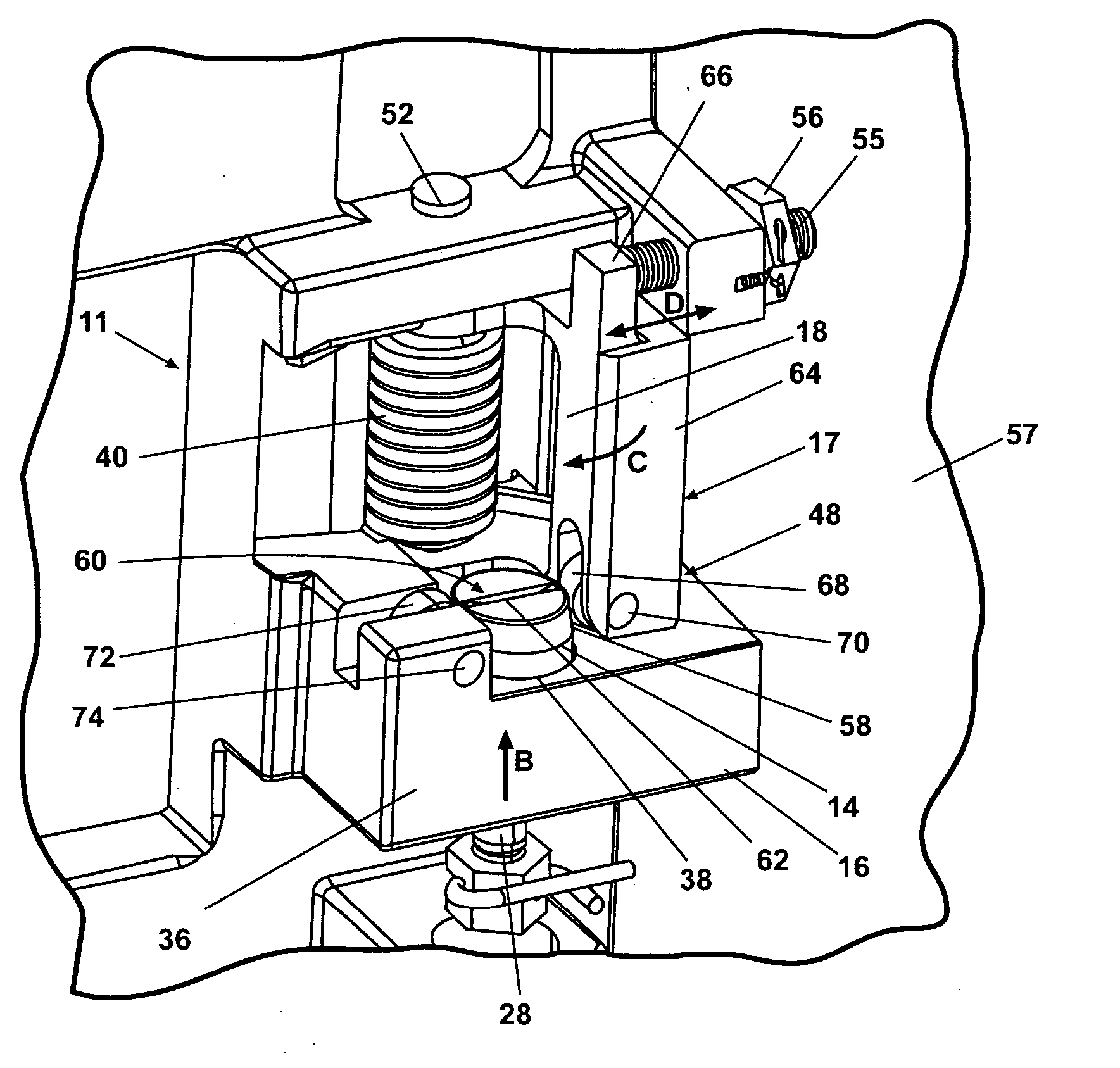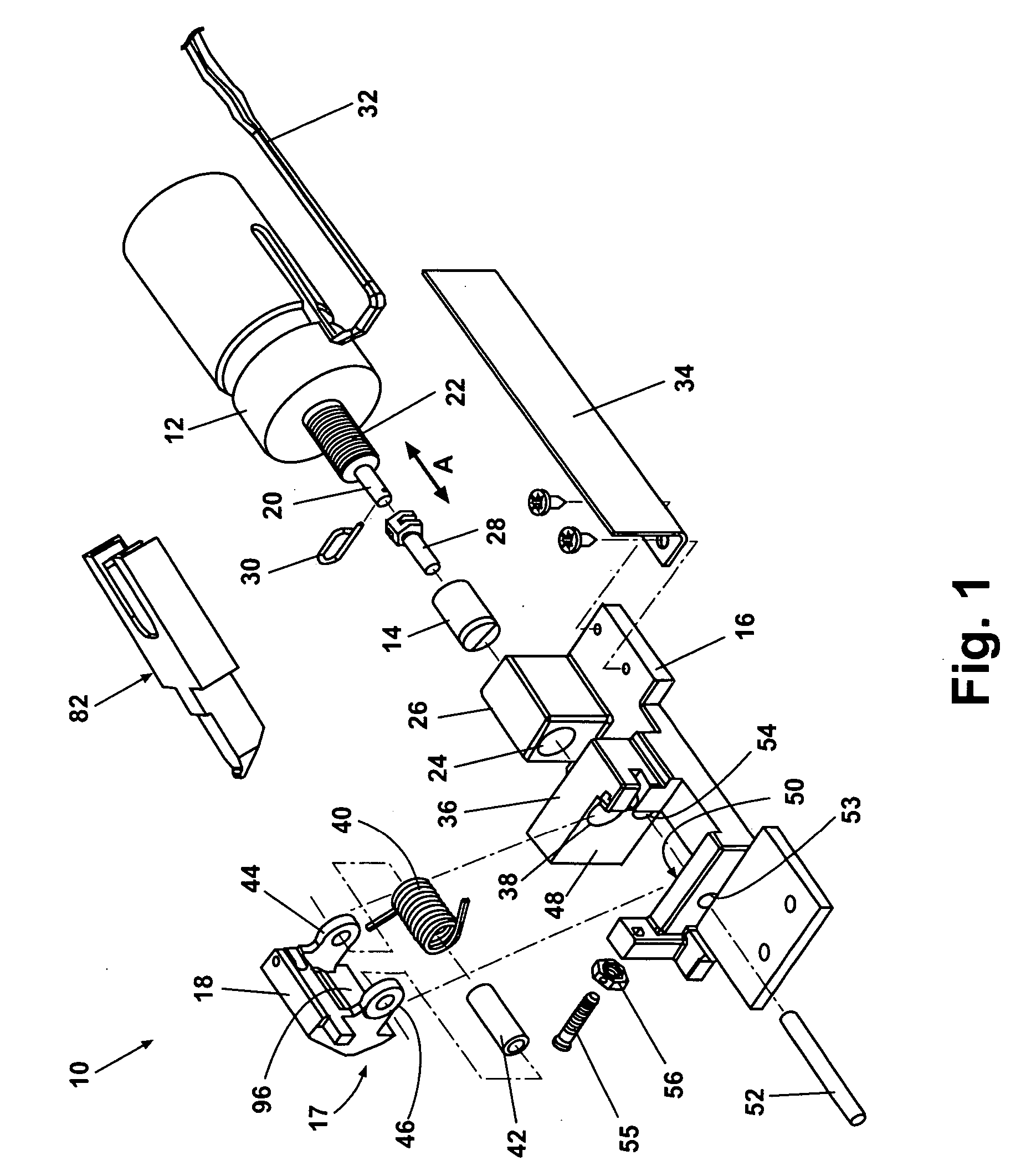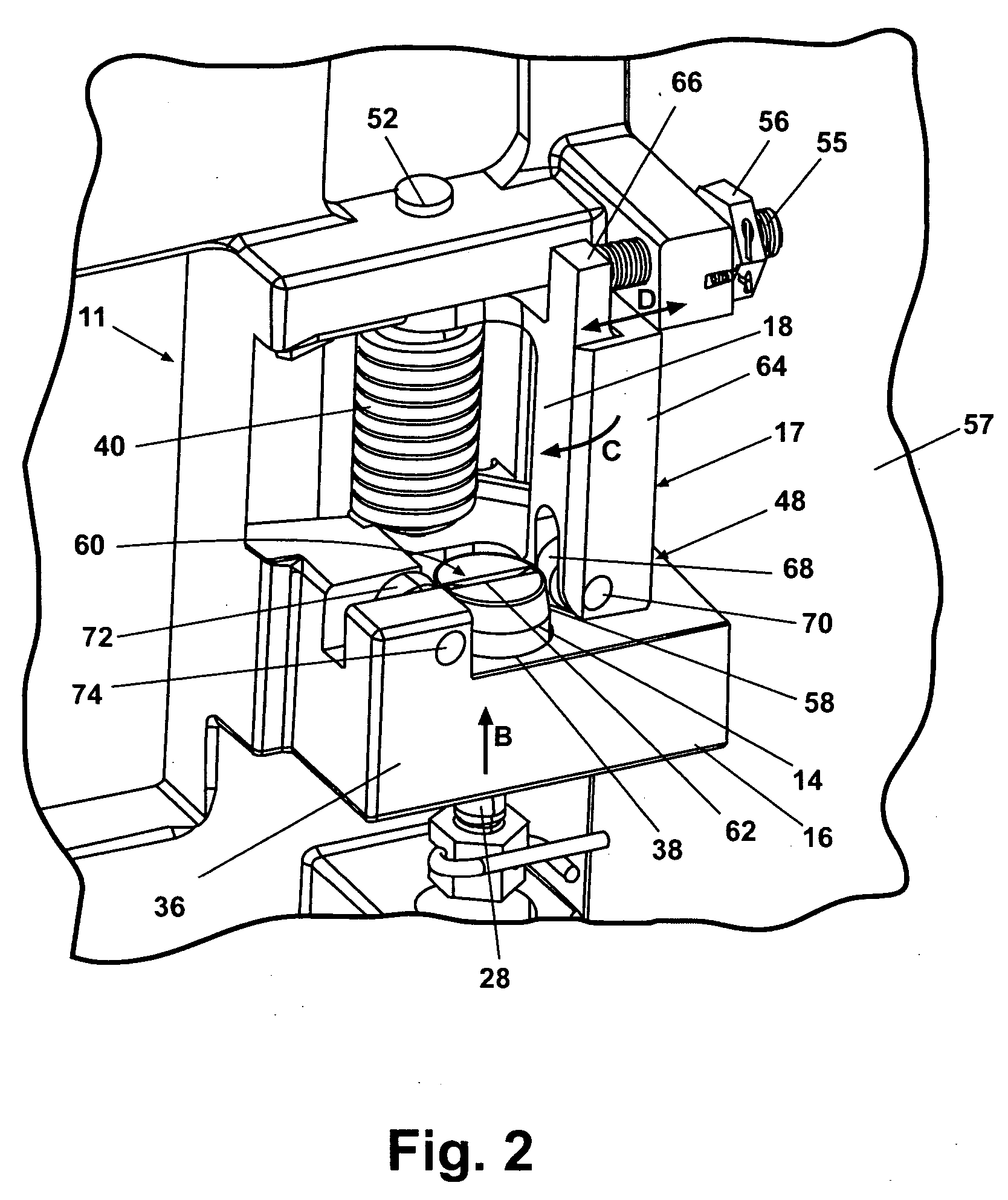Reduced door opening force and enhanced security flight deck door mechanism
a technology for flight deck doors and operating mechanisms, applied in aircraft accessories, building locks, construction, etc., can solve the problems of significantly more difficult to force open doors, and achieve the effects of reducing door opening force, reducing taper, and reducing the degree of taper
- Summary
- Abstract
- Description
- Claims
- Application Information
AI Technical Summary
Benefits of technology
Problems solved by technology
Method used
Image
Examples
Embodiment Construction
[0017] The following description of the preferred embodiments is merely exemplary in nature and is in no way intended to limit the invention, its application, or uses.
[0018] According to a preferred embodiment of the present invention and referring generally to FIG. 1, a door locking mechanism 10 includes a solenoid 12 which is operable to longitudinally displace a latch pin 14. Latch pin 14 is positioned in slidable engagement with a catch support assembly 16 of the present invention. Solenoid 12 positions latch pin 14 in either of pin displacement direction arrows “A”. A catch arm assembly 17 is rotatably mounted to catch support assembly 16. Latch pin 14 is operable to prevent rotation of a catch arm 18 of catch arm assembly 17 when latch pin 14 is positioned by solenoid 12 in a solenoid energized position of solenoid 12.
[0019] Solenoid 12 further includes a solenoid shaft 20 longitudinally displaceable in the direction of pin displacement direction arrows “A”. Solenoid shaft 2...
PUM
 Login to View More
Login to View More Abstract
Description
Claims
Application Information
 Login to View More
Login to View More - R&D
- Intellectual Property
- Life Sciences
- Materials
- Tech Scout
- Unparalleled Data Quality
- Higher Quality Content
- 60% Fewer Hallucinations
Browse by: Latest US Patents, China's latest patents, Technical Efficacy Thesaurus, Application Domain, Technology Topic, Popular Technical Reports.
© 2025 PatSnap. All rights reserved.Legal|Privacy policy|Modern Slavery Act Transparency Statement|Sitemap|About US| Contact US: help@patsnap.com



